#charity adams earley
Text
So I just learnt that Miss Grundy from Archie Comics that in lore she was part of the WAC, Women's Army Corps, during World War 2.
Since it's a Festive Day in America, I shall bring this up, the WAC is an all Female American Auxiliary Unit during the War, they mostly worked as Switchboard Operators, Mechanics, Postal Clerks, Drivers, Stenographers, Armorers, Bakers and many more Occupations within the Army.
Because they were in the Army and it was Wartime America, they needed to be in Tip Top shape, each member of the Corps was given a Fitness and Health Manual dictating Bodyweight Workouts for Arms, Legs, Core, Neck and Back as well as Skin care, Make-up and Hairstyle Advice, they even had a Section on designing a Personal Fitness Routine after Basic Training.
It sounds pretty Promising for an Auxiliary Unit, but not alot of people in America agree to this sort of thing as the Views were "Conservative" at that time, apparently they thought because Women in Uniforms were considered Sexually Immoral, which is complete Bullshit but oh fuck it's 1940s America, many People opposed against people joining the WAC by warning their Sisters that if they join they would viewed as Queer or Prostitutes.
My Christian Mind cannot comprehend the utter bullshitery of this because there is nothing Queer or Scandalous about joining the Military only that it's Dangerous and the only place that is Queer AF is probably the Navy.
Records say that loads of Christian Leaders in America were slandering this for some Reason and here I am Christian and I see no Fault in this.
But let's continue, many Women of Color joined the WAC, African American women get extra Segregation in their Civilian lives but in Training they learnt the same thing as their White Partners and were not segregated whatsoever, the First African-American Commissioned officer in the WAC was Charity Adams Earley.
Many women in the WAC Experienced so much heartache in the War that most of them don't want to be even KNOWN as Veterans due to everyone trying to cancel them for the Stupid views that they had, but after the War those who served in the WAC received the Women's Army Corps Service Medal.
Those who were also involved in the Manhattan Project, were awarded the Meritorious Unit Commendation; twenty women received the Army Commendation Ribbon and one, Captain Arlene G. Scheidenhelm, received the Legion of Merit.
Most men of the American Population thought that the WAC, and it's Navy and Air force Counterparts, or the integration of Women within the Military was Impossible but they did it, the WAC went on to be part of the Vietnam War and later during the WAC as a Branch of the Army Disbanded in 1978 and all Female units were integrated with Male units.
In 2015 Jeanne Pace, at the time the longest-tenured female warrant officer and the last former member of the WAC on active duty, retired.
Happy 4th of July! Don't be Sexist, believe in Equal Rights and don't be an Ass.
Enjoy your Independence Day.
#america#1940s america#ww2#WAC#women's army corps#world war 2#treat your veterans with respect#4th of july#ww2 america#ww2 history#archie comics#miss grundy#she also outranked mr weatherbee#military
2 notes
·
View notes
Text
Woman Warrior Honors ‘The Six Triple Eight’ and Veterans During Black History Month
The 6888 monument in the Buffalo Soldier Military Park at Fort Leavenworth, Kansas a and consist of a 25-inch Bronze bust of the unit’s Commanding Officer, LTC Charity Adams (Earley), eight black granite panels highlighting the unit’s lineage, historical information and key unit pictures.
February 5, 2024
By Laurie Hanson
During Black History Month, Keshia Javis-Jones is inspiring others to…

View On WordPress
0 notes
Text

The 6888th Central Postal Directory Battalion was an all-African American battalion of the Women’s Army Corps. The 6888th had 855 African American women, both enlisted and officers, and was led by Major Charity Adams Earley. It was the only all-African American, all-female battalion overseas during WWII. The group was nicknamed “Six Triple Eight” and their motto was “No mail, no morale”. The battalion was organized into five companies, Headquarters, Company A, Company B, Company C, and Company D. Most of the 6888th worked as postal clerks, but others were cooks, mechanics, and held other support positions so the 6888th was a self-sufficient unit.
During WWII, there was a significant shortage of soldiers who were able to manage the postal service for the Army overseas. In 1944, Mary McLeod Bethune worked to get the support of the First Lady, Eleanor Roosevelt, for “a role for Black women in the war overseas.” Black newspapers, too, challenged the Army to “use Black women in meaningful Army jobs.” The women who signed up went to basic training in Georgia. Women who were already in the WAC, like Alyce Dixon, served at different locations, including the Pentagon before they joined the 6888th. #africanhistory365 #africanexcellence
0 notes
Photo

The Little Known History of World War II's All-Black, All-Female Battalion
In 1927, an unlikely friendship arose between educator and civil rights activist Mary McLeod Bethune and future First Lady Eleanor Roosevelt, based on a shared belief in the power of education. When Franklin D. Roosevelt became president in 1933, Bethune served as an advisor on minority issues, and eventually was named Director of Negro Affairs in 1939. Her work with the administration led to the creation of the Black Cabinet, an informal group of advisors who worked on issues facing Black communities across the United States. The Black Cabinet helped the Roosevelt administration draft executive orders that ended the exclusion of Black Americans in the Army during World War II. In 1944, with the support of the First Lady, Bethune pushed for the admittance of Black women in the military, through inclusion in the Women’s Army Corps (WAC), a branch of the Army created in 1942. Though there was a backlash against having women in uniform from conservative elements in military leadership, tens of thousands of women were trained in a variety of non-combat specialties that were thought appropriate for women at the time: switchboard operation, baking, mechanics, stenography, postal work, and more. All were critical to the operation of the Army during wartime. Sending and receiving mail, for example, was a lifeline for soldiers, and the only way to stay connected to the friends and families they left behind. In 1945 alone, more than 3.3 billion pieces of mail went through the military postal service. Around 8 million Americans were stationed in Europe that year. The task of organizing and delivering all that mail was daunting, and a shortage of qualified postal workers led to a massive backlog. Army officers reported that the undelivered mail was hurting morale. Something had to be done, and a unique WAC battalion answered the call. The task of sifting through this growing stack of letters and packages—some of which had been mailed years before—was given to the 6888th Central Postal Directory Battalion, the only all-Black, all-female battalion to serve overseas during World War II. The 6888th—nicknamed “Six Triple Eight” and led by Major Charity Adams Earley—was originally expected to sort through 7 million pieces of mail and packages in Birmingham, England, over the course of six months. They did the job in three. During World War II, more than a million Black American men and women served in all branches of the U.S. armed forces. For many, it was a way to prove their belonging in a country that had mistreated and excluded them for so long. Segregation laws were still being strongly enforced. “A lot of Black Americans were also thinking about what it means to be drafted into segregated military branches,” says Matthew Delmont, a historian at Dartmouth College and author of Half American: The Epic Story of African Americans Fighting World War II at Home and Abroad. In a famous letter sent to the Pittsburgh Courier in January 1942, 26-year-old James G. Thompson asked, “Should I sacrifice my life to live half American?” For some Black men and women of the armed forces, fighting for freedom abroad became a stepping stone to fighting for freedom at home. In 1943, when the WAC began admitting Black women, the War Department said that it would continue to follow Army policy and maintain a 10 percent quota of Black women admitted. In their book A Black Women’s History of the United States, Daina Ramey Berry and Kali Nicole Gross estimate that 4,000 Black women signed up, even with the knowledge that they would be segregated. The WAC had successfully fought for women to be classified under the same rank as soldiers, and the branch shed its “auxiliary” status after a year in existence. However, while white women were getting medical training, Black women were relegated to only training in administrative work and cooking. According to Berry and Gross, Black women soldiers were ordered to “scrub and wash floors, wash dishes, and do all the dirty work.” When white WAC groups started getting deployed to serve in Europe, civil rights organizations, with the continued push from Mary McLeod Bethune, advocated for greater representation of Black women overseas. The War Department obliged. Major Charity Adams Earley was the first Black woman to become an officer, appointed in July 1942. The Army, like civilian life at the time, was still segregated, and Major Adams worked in a unit with other Black women at the Fort Des Moines Provisional Army Officer Training School in Iowa. In January 1945, the 26-year-old flew on a C-54 cargo plane to England, her mission a “secret” one that she would only be told about when she landed. Upon arrival, Major Adams was appointed commander of the 6888th Central Postal Directory Battalion and told to prepare to welcome the 855 Black American women who would be tasked with organizing the undelivered mail sitting in warehouses in Birmingham. The women of the battalion were also not told about their task until they arrived. After months of training in Fort Oglethorpe, Georgia, the women of the 6888th sailed to Glasgow, Scotland, on February 3, 1945. The journey on SS Île de France was fraught. While crossing the Atlantic Ocean, the ship was confronted by German U-boats, which forced the French ocean liner to change its course several times. In her book, One Woman’s Army: A Black Officer Remembers the WAC, Major Adams, while waiting to welcome her battalion in Glasgow, says, “the sight of two officers whom they [the women of the 6888th] knew, standing at dockside waiting to greet them, was like a breath of fresh air. Thanks to seasickness, the salt-water spray, and the limited personal conveniences, the group was a very unhappy looking lot.”Once the 6888th reached Birmingham by train, the women found themselves dwarfed by massive piles of mail in the facilities, which included six airplane hangars. On paper, the task, though huge, seemed simple enough—organize the packages and letters to be delivered to the right people—but there were complications. In poorly lit and unheated buildings, they had to sort through mail that sometimes only contained first names, nicknames, and common names like “Robert Smith.” They worked in shifts and processed an average of 65,000 pieces of mail per day until the job was finished, ahead of schedule. The next deployment was to Rouen, France, where they also finished clearing out a backlog of two to three years mail, with the help of French civilians and German prisoners of war.When the war ended in September 1945, the 6888th was sent to work in Paris. But there were fewer women, and morale suffered under an influx of mail for the holidays. They faced another challenge—the theft of small packages, and they had to work with civilians to track them down. By February 1946, the remaining women of the 6888th Central Postal Directory Battalion returned to the United States and the unit was disbanded at Fort Dix, New Jersey. By the end of their mission, the battalion had sorted through 17 million pieces of mail. Even though Major Adams was promoted to lieutenant colonel upon her return, the 6888th was given no public recognition or welcome ceremony. The women of the 6888th report that they felt as though they were treated better abroad than they were at home. The experience of returning home was incredibly demoralizing for many of the Black men and women who spent years risking their lives abroad. “Most white Americans, when the military part of the war ended, wanted to go back to the way things used to be,” Delmont says. “It was the exact opposite of what Black Americans wanted when they returned home.” While white veterans were commemorated and welcomed with celebration, Black veterans and service workers, including the women of the 6888th, felt as though they had been cast aside. “They got home and people acted like they hadn’t done anything, like they hadn’t also sacrificed to win the war,” says Delmont. Members of the battalion received the European African Middle Eastern Campaign Medal, the Women’s Army Corps Service Medal, and the World War II Victory Medal, but wider recognition for their accomplishments didn’t come for another 60 years. In 2009, three former members of the unit, Alyce Dixon, Mary Ragland, and Gladys Shuster Carter, attended a commendation ceremony at the Military Women’s Memorial at Arlington National Cemetery. On November 30, 2018, a monument dedicated to the 6888th was built at the Buffalo Soldier Monument Park in Fort Leavenworth, Kansas, consisting of a 25-inch bronze bust of commanding officer Major Adams. The back panel has the names of the 800-plus women who were assigned to the unit, by state of origin. On March 14, 2022, President Joe Biden signed a bill awarding the battalion the Congressional Gold Medal. The legacy of the 6888th Central Postal Directory Battalion goes beyond their incredible work during World War II. The women and their story have been included in exhibits, books, documentaries, and even a forthcoming Netflix film directed by Tyler Perry, called Six Triple Eight and starring Kerry Washington and Oprah Winfrey. Even as Jim Crow laws persisted at home, the 6888th provided an intimate and necessary connection between soldiers on the front line and their families on the home front. They left their mark in hearts and minds.
https://www.atlasobscura.com/articles/all-black-women-battalion-wwii-6888th
0 notes
Text
S04 E26: Major Charity Adams Earley and The Women's the 6888th Battalion
S04 E26: Major Charity Adams Earley and The Women’s the 6888th Battalion
[embedyt] https://www.youtube.com/watch?v=ABnwUBmsgHo%5B/embedyt%5D
The Genealogy Adventures team has come across a group of women with a history that is so riveting…we realized would take three shows just to give you a taste of the remarkable things they have done in history. It’s a history too few people know about.
The 6888th Central Postal Directory Battalion, nicknamed the “Six Triple…

View On WordPress
0 notes
Text
Her Story: Charity Earley
Georgia learns about Her Story: Charity Earley, an American Hero and Black Female First
Charity Adams Earley (1918-2002) was the first Black officer of the Women’s Auxiliary Corps and the highest ranking Black female officer in the Army during World War 2.
Raised in Columbia, SC, Lt. Col. Earley graduated from the HBCU, Wilberforce University in Ohio. She majored in physics, mathematics and Latin. She was a member of Delta Sigma Theta Sorority.
Charity Earley joined the Women’s…
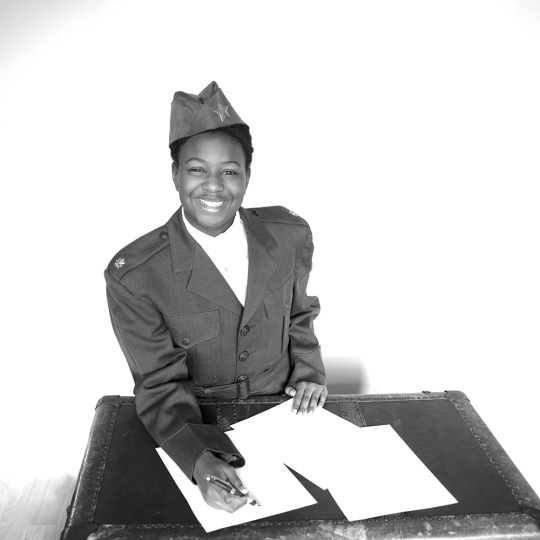
View On WordPress
#Army#Black History#Charity Earley#Delta Sigma Theta#First Commissioned Officer#HBCU#WAC#Women&039;s Army Corps#World War II
4 notes
·
View notes
Text

(CNN)Members of the Women's Army Corps' all-Black 6888th Central Postal Directory Battalion had to fight racial discrimination, gender discrimination and the war itself during World War II.
After traveling overseas in 1945, the unit, nicknamed "Six Triple Eight," survived encounters with Nazi U-boats and a German rocket explosion before spending months sorting through unheated warehouses stacked to the ceiling with mail and packages, according to the US Army Center of Military history. The battalion cleared a six-month backlog of mail in just three months.
Quarters were segregated by race and gender, leaving the group to run its own facilities. There were no commemorative ceremonies for members when they came home at the end of the war.
But this year, the US Senate passed legislation to grant a Congressional Gold Medal to the battalion.
Members of the House of Representatives are trying to gather enough votes to pass its companion bill and make the award official, said Carlton Philpot, chairman of the Buffalo Soldier Educational and Historical Committee, part of the National 9th and 10th Cavalry Association. The committee works to recognize Black American military units and soldiers.
"It's wonderful, and it's time," said Stanley Earley III, son of late 6888th commander Lt. Col. Charity Adams Earley. "It should have happened 50, 60 years ago. But there is now the opportunity for a recognition that these folks did all these things that were so important."
Only seven of the original 855 members are believed to still be alive, Earley said.
The unit has been receiving more attention and accolades in recent years. A monument honoring the battalion was dedicated in Fort Leavenworth, Kansas in 2018. A documentary, "The Six Triple Eight: No Mail, Low Morale," celebrated the mail tracking system the battalion created. (By the end of the war, the unit processed about 17 million pieces of mail, according to the National World War II Museum.)
When Lt. Col. Adams Earley died in 2002, both the local Air Force base and the Army sent honor guards to her funeral, said Earley, who noted that his mother and her fellow soldiers constantly fought discrimination while serving.
"I remember she would talk about, there were classes that were segregated male and female, and there were also classes that were segregated racially, so you could theoretically have a situation where you had four classes," Earley told CNN, describing some of his mother's anecdotes about training. "At some point, they realized everybody could listen to the same lecture."
Maj. Fannie Griffin McClendon, who is among the surviving members of the battalion, talked about her WWII experience in a 2019 meeting with her local congressman, who interviewed her for the Library of Congress's Veterans History Project.
"It was to me history-making in that I learned geography and loved history in school -- and to go to places I had read about or heard about, to me it just brought back things I had learned in school," McClendon told Arizona Democratic Rep. Greg Stanton. "I still think about it even today."
#Women's Army Corps' all-Black 6888th Central Postal Directory Battalion#Six Temple Eight#WWII#Congressional Gold Medal#Black Women’s History
2 notes
·
View notes
Text
World War II — The Double V Campaign
World War II — The Double V Campaign
By Neely Tucker
Published August 19, 2020 at 12:32PM
Black members of the Women’s Army Auxiliary Corps head to Fort Clark, Texas. Left to right: Auxiliaries (Privates) Florence Barbara Davis, Plaquemine, Louisiana; Dorothy Lee Harris, Washington, Texas; Mildred Lucile Turk Atlanta, Georgia., and Juanita Parisenne Ingraham, Gainesville, Florida. Prints and Photographs Division.
This is a guest post by Margaret McAleer, a historian in the Manuscript Division. It appears in the July/August issue of the Library of Congress Magazine, one of several articles on the 75th anniversary of the end of World War II.
As members of America’s greatest generation, Jimmie Kanaya, William S.M. Banks Jr. and Charity Adams Earley had a lot in common. They served with the U.S. Army in the European Theater during World War II. They responded with exceptional valor and service to the nation’s call for patriotism, courage and ingenuity. They were among more than 30,000 Japanese Americans and one million African Americans who served in segregated units during the war, fighting fascism abroad and for an end to brutal discrimination at home. It was the “Double V” campaign, fighting for victories on two fronts.
Yeiichi Kelly Kuwayama served in the 442nd Infantry Regiment in Italy. Veterans History Project. Prints and Photographs Division.
Kanaya was a medic with the Japanese American 442nd Regimental Combat Team. He was awarded a Silver Star for tending to wounded men under heavy enemy fire near Castellina, Italy. Banks, an officer with the 92nd Infantry Division (known as the “Buffalo Soldiers”), also received a Silver Star in Italy when his company held out for a week against repeated enemy assaults. Adams commanded the 6888th Central Postal Directory Battalion, the only African American Women’s Army Corps battalion deployed overseas. Her unit cleared a six-month backlog of mail and packages in only three months after arriving in England in early 1945.
In the European Theater where Kanaya, Banks and Adams served, Japanese American combat units — the 442nd Regimental Combat Team and 100th Battalion — were among the most decorated of the war. African Americans in the theater flew 15,000 sorties as famed Tuskegee airmen, transported thousands of tons of supplies daily in truck convoys known as the “Red Ball Express” and advanced with the Third Army as members of the 761st Tank Battalion, among other achievements.
They accomplished the impossible against a strong headwind of racism.
Kanaya faced the painful task of helping his parents move from their home in Oregon to an internment camp in Idaho. “With our parents incarcerated,” Kanaya said, he and other Japanese American soldiers felt the need to prove themselves.
Members of Tuskegee Airmen’s 332nd Fighter Group in Ramitelli, Italy. Left to right: Robert W. Williams, Ottumwa, Iowa,; William H. Holloman, III, St. Louis, Missouri.; Ronald W. Reeves, Washington, D.C.; Christopher W. Newman, St. Louis, Missouri; Walter M. Downs, New Orleans, Louisiana. Photo: Toni Frissell. Prints and Photographs Division.
When word came that his company would be deployed overseas, Banks’ white commanding officer predicted it would be sent to heavy fighting in the Pacific in order to increase the percentage of African American causalities. Banks found the statement “nauseating.”
Despite her rank, Adams recounted “salutes were slow in coming, and, frequently, returned with great reluctance.” Yet she never ceased to use her rank to fight against the discrimination experienced by women in her command. She was aided occasionally by white military personnel who stood up against racism. While traveling in uniform, she was barred from entering the dining car on her train until a white officer standing behind her thundered at the steward: “What in the world are we fighting this damned war for?”
His question was among the most important of the war. Indeed, service men and women of color fought on two fronts — against fascism and oppression overseas and against racism and discrimination at home. They achieved impossible feats despite demoralizing racism, violent encounters stateside, senseless inefficiencies created by segregation policies and training, housing and resources that were often substandard.
Their heroism in this dual war is told in oral histories and collections of personal papers and organizational records preserved in the Library’s Veterans History Project and Manuscript Division.
“In a thousand subtle ways, in a thousand brutal ways, we were taught we were no part of American culture and history,” observed Nelson Peery, who served with the African American 93rd Infantry Division. “Here we were making history.”
Subscribe to the blog— it’s free! — and the largest library in world history will send cool stories straight to your inbox.
Read more on https://loc.gov
2 notes
·
View notes
Photo

Charity Adams Earley was valedictorian of her high school class, fluent in German, and majored in math, physics, and Latin in college. She was also the highest-ranking black female officer during World War II. 1946. Check this blog!
19 notes
·
View notes
Photo

𝐌𝐚𝐣. 𝐂𝐡𝐚𝐫𝐢𝐭𝐲 𝐀𝐝𝐚𝐦𝐬 𝐄𝐚𝐫𝐥𝐞𝐲 was one of only two African American women with the wartime rank of major. She was the commander of the only all-black Women's Army Corps unit to go overseas during World War II. She spent her military service in an army that was generally prejudiced against women in general and black women in particular.⠀ ⠀ She risked a court-martial by defying a general when he proposed finding a white office to show her how to do the job. Her obituary in the New York Times after her death on January 13, 2002, called her a "Black Pioneer in the Wacs." With dignity and reserve, she helped to break down the barriers of gender and racial discrimination in the military and gave other young women, especially African Americans, a chance to serve their country with honor and respect.⠀ ⠀ ==⠀ ⠀ Source: "Charity Adams Earley." Notable Black American Women, Gale, 2002. Gale In Context: Biography.⠀ .⠀ .⠀ .⠀ #pgcc #pgcclibrary #blackhistorymonth #charityadams #vetgirlsriseday (at Prince George's Community College) https://www.instagram.com/p/B8wFK9MBSxz/?igshid=edaikmr601g7
1 note
·
View note
Text
'Long-overdue recognition': All-Black women's World War II unit to be awarded Congressional Gold Medal
A bipartisan bill, introduced by Sens. Jerry Moran (R-Kansas) and Jacky Rosen (D-Nevada), was passed by the Senate in April 2021 and the House last month. President Joe Biden signed a bill into law on March 14 that awards a Congressional Gold Medal to the women of the 6888th Central Postal Directory Battalion, nicknamed the "Six Triple Eight."
The honor was granted "in recognition of their pioneering military service, devotion to duty, and contributions to increase the morale of personnel stationed in the European theater of operations during World War II," the bill states.
The Six Triple Eight was a unit made up of about 850 Black women who were tasked with overcoming a massive backlog of mail, according to the Department of Defense. The unit traveled to Great Britain in 1945, surviving encounters with Nazi U-boats and a German rocket explosion along the way, before spending months sorting through mail and packages stacked to the ceiling in unheated warehouses, according to the U.S. Army Center of Military history.
They adopted the motto, "No mail, low morale." The unit set up a new mail tracking system and cleared the six-month backlog of mail in just three months, the center said. By the end of the war, the unit processed about 17 million pieces of mail, according to the National World War II Museum.
Like much of the country, the military was segregated throughout World War II. Black service members faced continuous racism, and the women of the 6888th have sharp memories of being segregated on trains, spat at and demeaned by white men and women.
The unit later was moved to France and then ultimately disbanded without fanfare in 1946. There were no commemorative ceremonies for members when they came home at the end of the war.
The Six Triple Eight was led by Army Maj. Charity Earley (née Adams), who later rose to the rank of lieutenant colonel. She died in 2002, and her son praised the belated recognition last year.
"It's wonderful, and it's time," said Stanley Earley III. "It should have happened 50, 60 years ago. But there is now the opportunity for a recognition that these folks did all these things that were so important."
As of last summer, only seven members were believed to still be alive, he said.
You Can Read More Of The Store By Visiting The Full Report Here!
#black woman#black lives matter#black lgbt#video: suspect smashes usps vehicle window#aclu#chicago usps#us postal service#mail#us post office#naacp#black history#black americans#black army#black panther#lgbtqi#lesbian#cnn#transgender#black and white#lgbt#black stories#black dress#black beauty#black love#arizona#white#black women#women power#beautiful women#women
0 notes
Photo

The 6888th Central Postal Directory Battalion was an all-African American battalion of the Women's Army Corps. The 6888th had 855 African American women, both enlisted and officers, and was led by Major Charity Adams Earley. It was the only all-African American, all-female battalion overseas during WWII. The group was nicknamed "Six Triple Eight" and their motto was "No mail, no morale". The battalion was organized into five companies, Headquarters, Company A, Company B, Company C, and Company D. Most of the 6888th worked as postal clerks, but others were cooks, mechanics, and held other support positions so the 6888th was a self-sufficient unit. During WWII, there was a significant shortage of soldiers who were able to manage the postal service for the Army overseas. In 1944, Mary McLeod Bethune worked to get the support of the first lady, Eleanor Roosevelt, for "a role for black women in the war overseas." Black newspapers, too, challenged the Army to "use black women in meaningful Army jobs." The women who signed up went to basic training in Georgia. Women who were already in the WAC, like Alyce Dixon, served at different locations, including the Pentagon before they joined the 6888th. #africanhistory365 #africanexcellence https://www.instagram.com/p/CoPrLKJrEqn/?igshid=NGJjMDIxMWI=
1 note
·
View note
Link
Clockwise from top left: Charity Adams Earley, Harriet Tubman, Edith Nourse Rogers, Lori Piestewa and Mary E. Clarke (Photo illustration by Meilan Solly / Photos via Getty Images, U.S. Army and Wikimedia Commons)
0 notes
Text
S04 E25: The Women’s Army Corp 6888th Central Postal Directory Battalion – Part 1
S04 E25: The Women’s Army Corp 6888th Central Postal Directory Battalion – Part 1
[embedyt] https://www.youtube.com/watch?v=4HhVFNgDa5Q%5B/embedyt%5D
The 6888th Central Postal Directory Battalion, nicknamed the “Six Triple Eight”, was an all-black battalion of the Women’s Army Corps (WAC). The 6888th had 855 black women, both enlisted and officers, and was led by Major Charity Adams Earley. It was the only all-black, all-female battalion overseas during World War II. The…

View On WordPress
1 note
·
View note
Link
More information about Lt. Col Charity Adams Earley and the 6888th Central Postal Directory Battalion ("Six Triple Eight"), the first and only black WAC unit to be deployed to Europe during World War II. (https://www.womenofthe6888th.org)
0 notes
Text
50 Iconic Black Trailblazers Who Represent Every State In America

1 - Alabama: Claudette Colvin
Before Rosa Parks, there was Claudette Colvin. Born in 1939 in Montgomery, Alabama, Colvin became the first person to be arrested for rebelling against bus segregation in the city after refusing to give up her seat to a white person in 1955. At the time, Colvin was just 15 years old
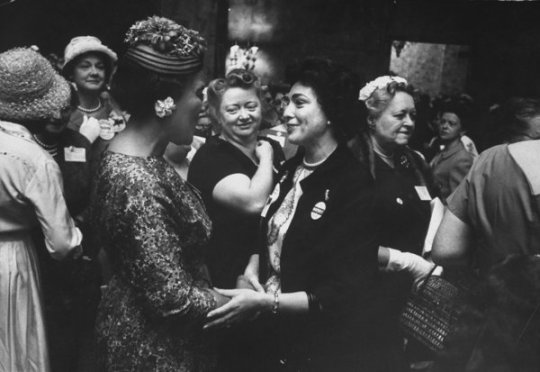
2 - Alaska: Blanche McSmith
Blanche McSmith (center left) was born in 1920 in Texas. After moving to Alaska in 1949, McSmith became president of the NAACP’s Anchorage branch. A decade later, Smith made history by becoming the first black representative in the Alaska legislature.

3 - Arizona: Dr. Rick Kittles
Dr. Rick Kittles is a highly renowned figure in the field of genetics, known for using DNA testing to explore the ancestry of African-Americans. He currently serves as Chair of Minorities in Cancer Research at the American Association for Cancer Research.
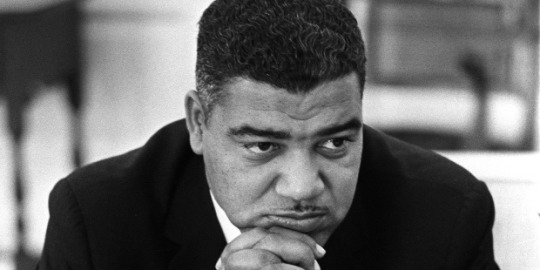
4 - Arkansas: John Cross, Jr.
John Cross Jr. was born in Haynes, Arkansas in 1925. In 1962, Cross became a pastor at the 16th Street Baptist Church in Birmingham, Alabama where civil rights activists would often convene. In 1963, the church was the site of a bomb by KKK members that killed four young girls. Cross became a leader for the grieving town by continuing his sermons and presiding over the three of the girls’ funerals.

5 - California: Octavia Butler
Octavia Butler, born in 1947 in Pasadena, California, was one of few black female sci-fi writers during the high point of her career in the 1970s. In 1995, her work was prestigiously rewarded when she became the first sci-fi author to receive the MacArthur fellowship or “genius grant.” With the money from the grant, Butler bought a home for her mother and herself.
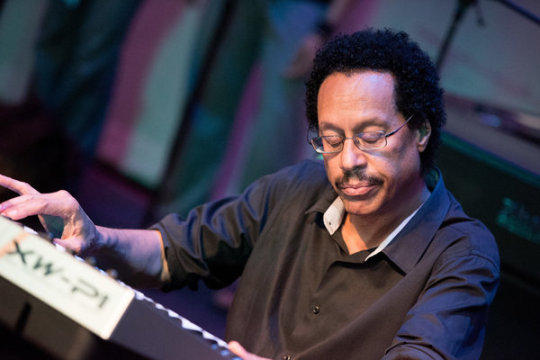
6 - Colorado: Larry Dunn
Larry Dunn, born in Denver, Colorado in 1953, was the keyboardist of Earth, Wind & Fire for 11 years. He helped create the band’s 1975 hit “Shining Star.”

7 - Connecticut: Adam Clayton Powell, Jr.
Adam Clayton Powell, Jr. was born in New Haven, Connecticut in 1908, but New York is where he made history. In 1945, Powell became the first black person to become a U.S. Representative for the state of New York. Many of the bills he proposed during his 15 years in office would eventually be included in the Civil Rights Act of 1965.

8 - Delaware: Clifford Brown
Born in Wilmington, Delaware in 1930, Clifford Brown was an accomplished jazz trumpeter who helped set the standard for the musicians who would succeed him. In 1989, the first Clifford Brown Jazz Festival, which remains an annual event, was held in Wilmington, Delaware to honor the late musician.

9 - Florida: Esther Rolle
From Broadway shows to the classic sitcom “Good Times,” Esther Rolle, born in 1920 in Pompano Beach, Florida, had a prominent acting career. Audiences loved Rolle’s character on TV sitcom “Maude,” so much so that the show’s producer Norman Lear created “Good Times” as a spinoff series in which Rolle would star.
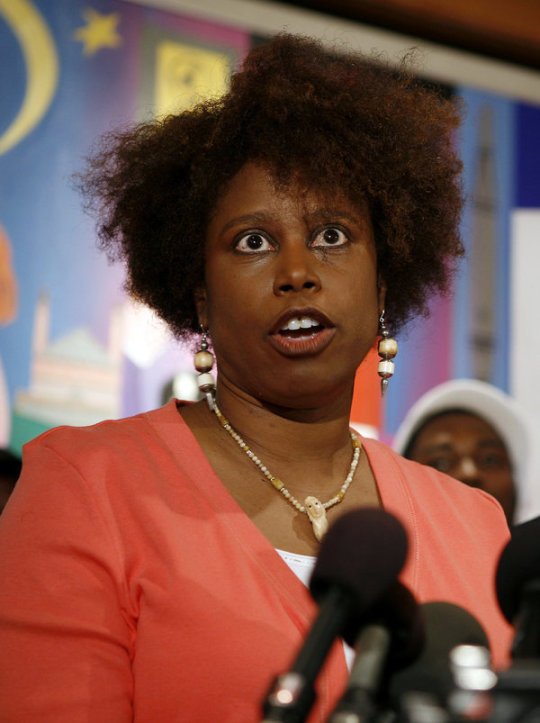
10 - Georgia: Cynthia McKinney
Born in 1955, Cynthia McKinney of Atlanta, Georgia, became the first black woman to represent the state in the U.S. House of Representatives in 1992.
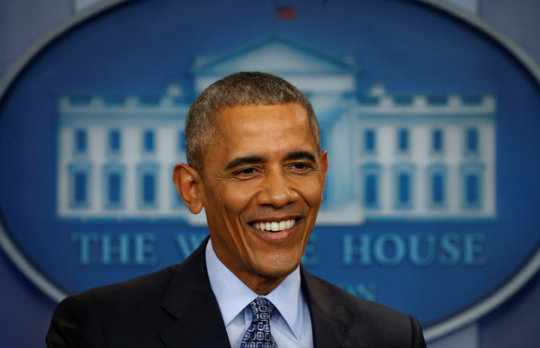
11 - Hawaii: Barack Obama
Born in 1961 in Honolulu, Hawaii, Barack Obama made history on November 4, 2008 when he was elected to become America’s first black president. His legacy has been an inspiration for citizens worldwide.

12 - Idaho: Victor Wooten
Born in Mountain Home, Idaho in 1964, Victor Wooten was a member of the jazz band Bela Fleck and the Flecktones before embarking on a career as a solo musician. Wooten is a five-time Grammy winning musician was voted one of the top bassists of all time by a Rolling Stone reader poll.
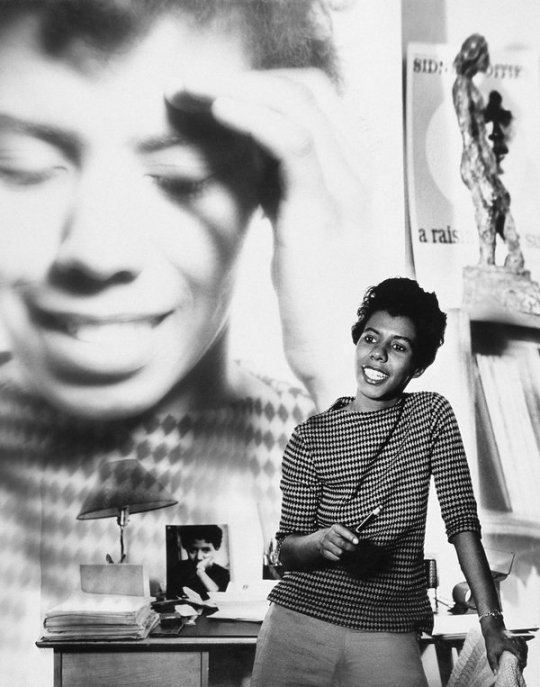
13 - Illinois: Lorraine Hansberry
Born in Chicago, Illinois in 1930, Lorraine Hansberry was the first black playwright to have their work staged on Broadway with “A Raisin In The Sun.” She was also the youngest American to receive a New York Critics Circle award.
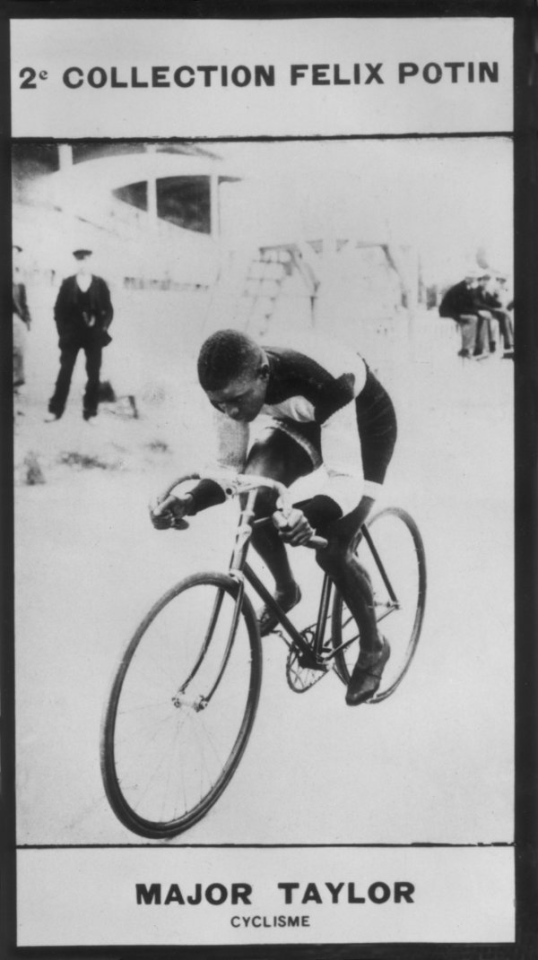
14 - Indiana: Major Taylor
Marshall Walter “Major” Taylor was born in 1878 in Indianapolis, Indiana. He was the first black person to become a champion in a sport and held seven world records by the time he retired at 32-years-old. He retired as one of the richest athletes in history.
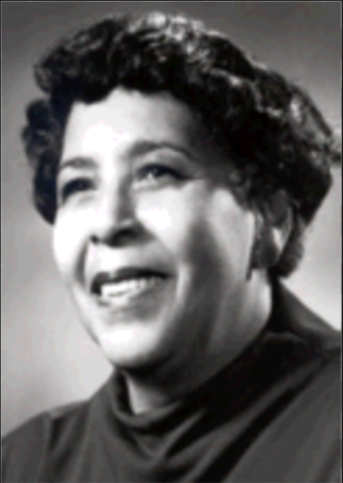
15 - Iowa: Charity Adams Earley
Although born in South Carolina in 1918, Charity Adams Earley made history in Fort Des Moines, Iowa when she became one of the first black female officers of the Women’s Army Corps. She later became the first black woman to be commissioned by the Women’s Army Auxiliary Corps.
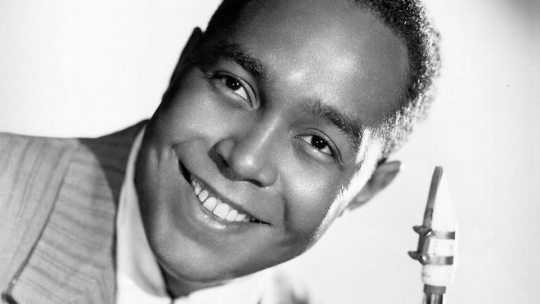
16 - Kansas: Charlie Parker
Indeed, “Bird Lives” in heart and mind in Kansas City where Charlie “Yardbird” Parker was born in 1920. Parker was a highly influential jazz soloist and a leading figure in the development of bebop, a form of jazz characterized by fast tempos, virtuosic technique and advanced harmonies. Parker was an icon for the hipster subculture and later the Beat Generation, personifying the jazz musician as an uncompromising artist and intellectual rather than just an entertainer.

17 - Kentucky: bell hooks
Born Gloria Jean Watkins in Hopkinsville, Kentucky in 1952, noted cultural scholar, award-winning author and black feminist who goes by the namesake of her great grandmother, bell hooks. In 2015, the bell hooks Institute was created at Berea college. The institute allows for a comprehensive study into hooks’ works and theories.
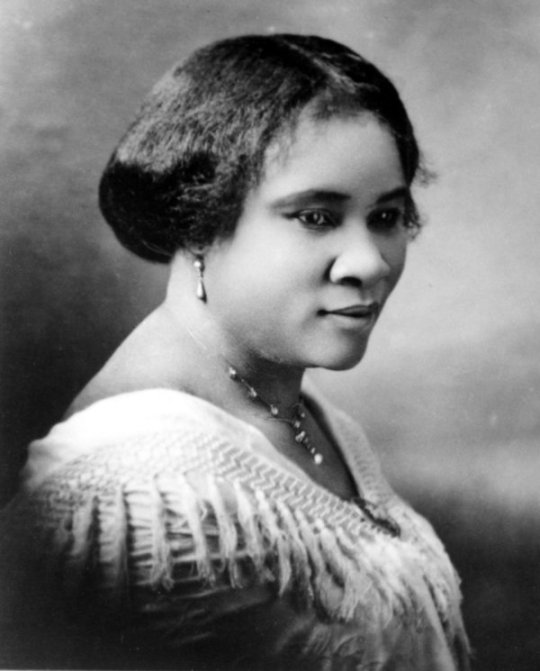
18 - Louisiana: Madam C.J. Walker
Born Sarah Breedlove in 1867 in Near Delta, Louisiana, Madam C.J. Walker epitomizes the term “self-made.” By inventing and selling hair products, Walker became first American woman to become a self-made millionaire. Walker created a hair routine that’s still popular among black women today referred to as the “Walker System.” Walker donated some of her money to black organizations like the NAACP and the black YMCA.

19 - Maine: William Burney
Born in Augusta, Maine in 1951, William Burney was elected the first black mayor of the town in 1988.
(Picture unavailable).
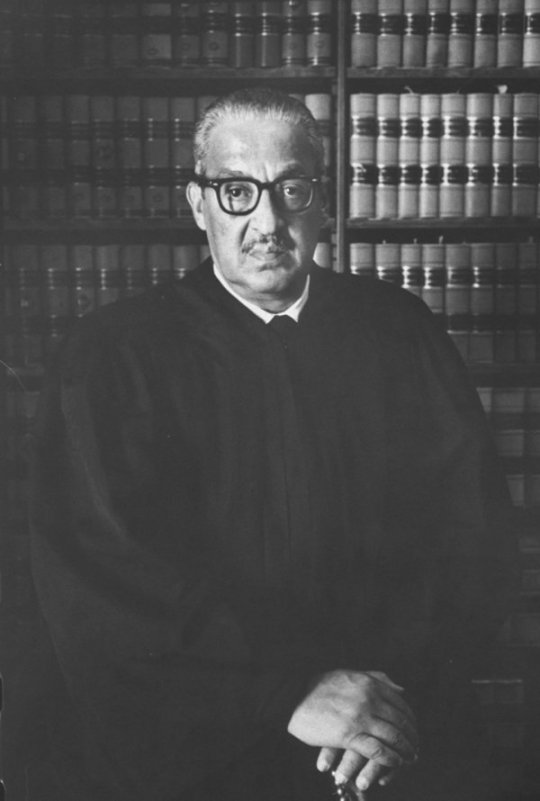
20 - Maryland: Thurgood Marshall
Thurgood Marshall was born in 1908 in Baltimore, Maryland. As NAACP Chief Counsel, in 1952, he took on the case of Brown vs. Board of Education (1954) on behalf of the plaintiffs. Marshall won the case, which deemed public school segregation to be unconstitutional. In 1967, Marshall would become an even more prolific figure by becoming the first black Supreme Court Justice.

21 - Massachusetts: Phillis Wheatley
Phillis Wheatley was born in Senegal in 1753 and sent overseas to Boston, Massachusetts where she would become a slave. While enslaved, Wheatley was constantly exposed to books. In 1773, she became the second woman and the first black person to have their poetry published.
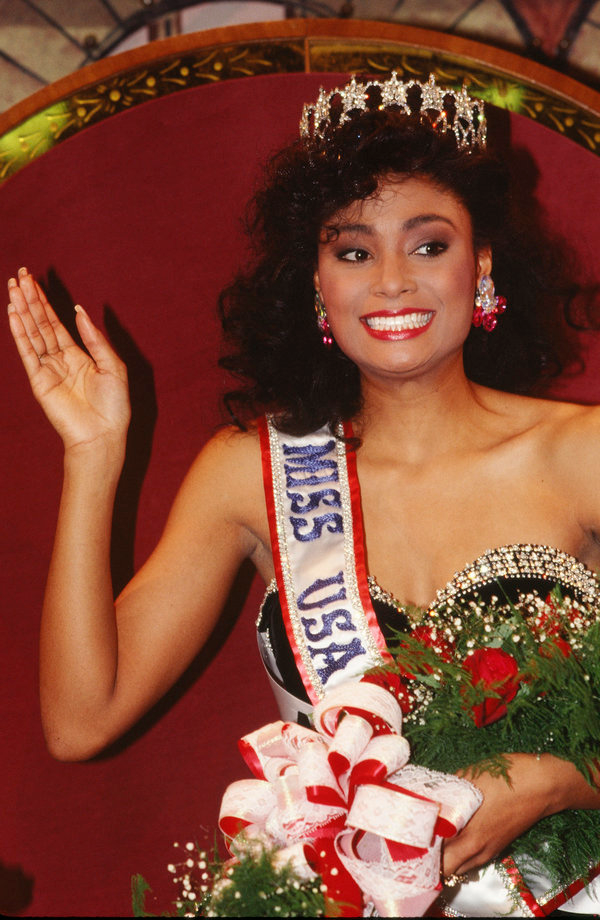
22 - Michigan: Carole Anne-Marie Gist
Born in Detroit, Michigan in 1969, Carole Anne-Marie Gist made history when she became the first black Miss USA in 1990.

23 - Minnesota: Toni Stone
Born in 1921 in St. Paul, Minnesota, Toni Stone became the first woman to play in a professional men’s baseball league when she joined the San Francisco Sea Lions of the West Coast Negro Baseball Leagues in 1953. Stone endured endless acts of racial and gender-based discrimination.

24 - Mississippi: Fannie Lou Hamer
Born in 1917 in Montgomery County, Mississippi, Fannie Lou Hamer was a relentless civil rights advocate. Hamer endured arrests, assault and being shot at by racists upset by Hamer’s activism. Hamer made a notable speech at the 1964 Democratic National Convention on being black in America. She helped black citizens register to vote and created organizations to service minority families.

25 - Missouri: Maya Angelou
Born in 1921 in St. Louis, Missouri, Maya Angelou is a renowned, poet, author and civil rights activist. Her works such as “Still I Rise” and “I Know Why The Caged Bird Sings” have spanned generations. When close friend Dr. Martin Luther King, Jr. was assassinated on her birthday, Angelou went years without celebrating her April 4th birthday.

26 - Montana: Geraldine Travis
Born in 1931 in Albany, Georgia, Geraldine Travis became the first black person elected to be elected to Montana’s State Legislature in 1974. She worked to advance civil rights both in and outside of government.

27 - Nebraska: Malcolm X
Born Malcolm Little in 1925 in Omaha, Nebraska, Malcolm X was a fearless civil rights icon and a spokesman for the Nation of Islam. The X that replaced his last name was intended to serve as representation of the loss of his African identity. X was responsible for the popularity of the “any means necessary” philosophy which emphasizes going to any length to protect your rights.

28 - Nevada: Henry W. Lockerman
Henry W. Lockerman was a Porter of the Nevada State Senate in 1889. He was a civil war veteran who served in the 79th U.S.C.I. at Fort Scott, Kansas which was the first colored infantry unit in Kansas.
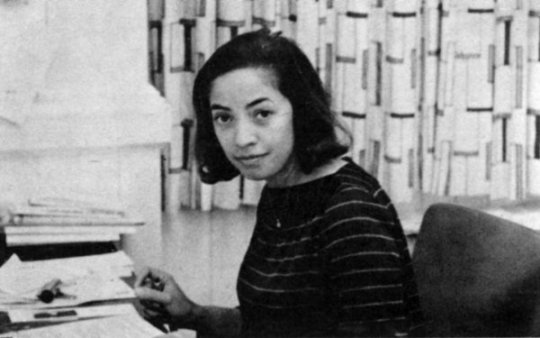
29 - New Hampshire: Myrna Adams
Myrna Adams made history at the University of New Hampshire by becoming the school’s first administrator in 1969 where she aided black students through financial aid and advisement.
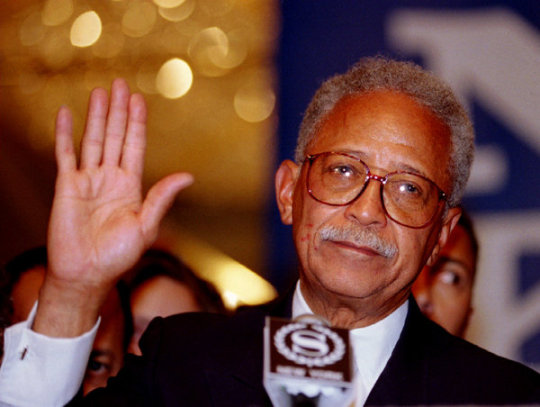
30 - New Jersey: David Dinkins
Born in 1927 in Trenton, New Jersey, Howard University alumnus David Dinkins became the first black mayor of New York City in 1989 beating opponent Rudy Giuliani and incumbent Ed Koch. Dinkins went on to teach at Columbia University and has a building named after him in Manhattan.
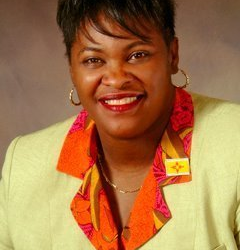
31 - New Mexico: Sheryl Williams Stapleton
Born in 1958 in Saint Croix in the U.S. Virgin Islands, Sheryl Williams Stapleton became the first black woman to serve as New Mexico Legislature’s floor leader in January 2017. She’s served as a State House representative for New Mexico’s 19th district in 1994.

32 - New York: James Baldwin
Born in Harlem in 1924, author James Baldwin’s prolific works like “Go Tell It On The Mountain” and “Giovanni’s Room” have become literary classics.

33 - North Carolina: Moms Mabley
Born in 1894 in Brevard, North Carolina, Moms Mabley’s success in the male-dominated world of comedy was rare. She was the first female comedian to perform at the Apollo theater and appeared in numerous movies. Her life would become the subject of an off-Broadway play as well as a documentary directed by Whoopi Goldberg.

34 - North Dakota: Rosemary Sauvageau
In 2012, Rosemary Sauvageau became the first black Miss North Dakota. Following two second place position in 2010 and 2011 pageants, Sauvageau, 24, persevered and resultantly, made history.

35 - Ohio: Dorothy Dandridge
Born in 1922 in Cleveland, Ohio, Dorothy Dandridge was an actress, singer and beauty icon. After starring in the 1954 film “Carmen Jones,” Dandridge became the first black woman to be nominated for an Academy Award for best actress.

36 - Oklahoma: Ralph Ellison
Born in 1914 in Oklahoma City, Oklahoma, novelist Ralph Ellison wrote the classic 1953 National Book Award winner in fiction “Invisible Man.” Ellison was awarded the Presidential Medal of Freedom in 1969.

37 - Oregon: Geraldine Avery
Geraldine Avery was the first black person to become a police matron in Oregon in 1954.
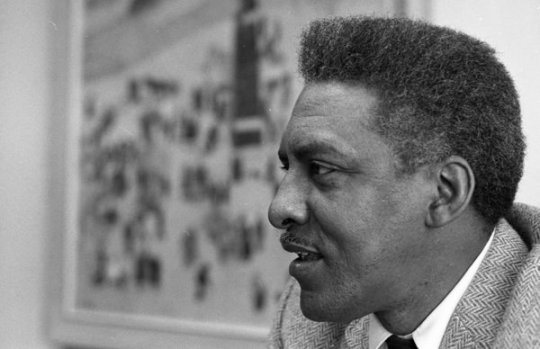
38 - Pennsylvania: Bayard Rustin
Born in 1912 in West Chester, Pennsylvania, the leader of numerous civil rights movements, Bayard Rustin was a much lesser-known civil rights organizer. Rustin, who was also openly gay, worked alongside Dr. Martin Luther King, Jr. and played a significant role in King’s commitment to non-violence.
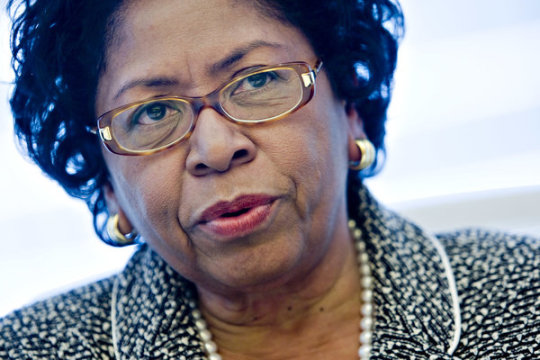
39 - Rhode Island: Ruth Simmons
Although from Texas, Ruth Simmons, born in 1945, made history in Providence, Rhode Island when she became the first black person to serve as president of Brown University in 2001. The presidency also made her the first black person to run an Ivy league University.
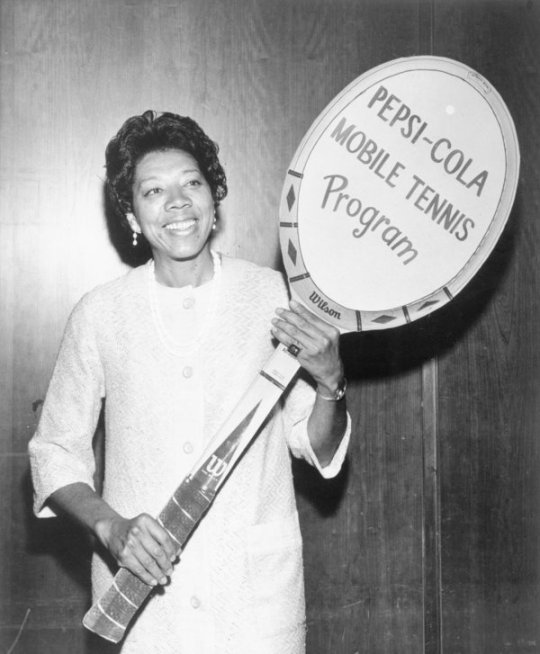
40 - South Carolina: Althea Gibson
After becoming the first black female professional tennis player, Althea Gibson, born in 1927 in Silver, South Carolina, would go on to become the first black person to hold a number of titles in the sport. She was the first black person to win Wimbledon and the French and U.S. Open.
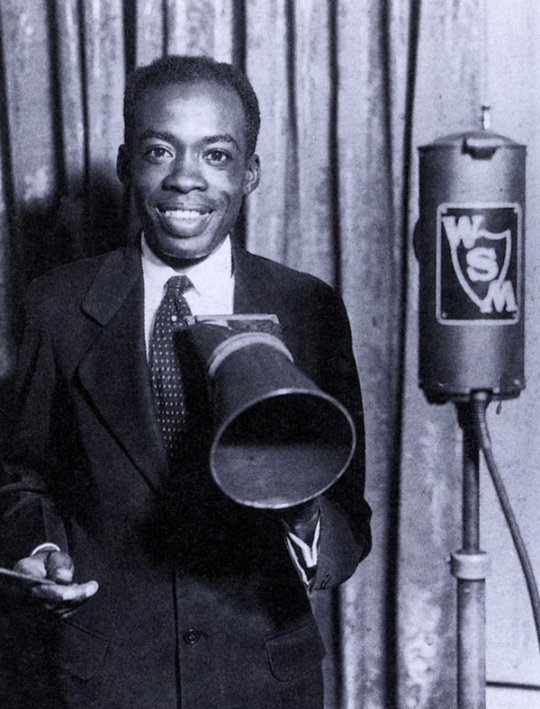
41 - Tennessee: DeFord Bailey
Born in 1899 in Smith County, Tennessee, DeFord Bailey was one of country music’s first black notable musicians. His harmonica skills landed him a permanent gig on a radio station until he eventually began recording and performing despite constantly facing racial discrimination.

42 - South Dakota: Oscar Micheaux
Although born in Illinois in 1884, Oscar Micheaux was living in South Dakota when he wrote the book that would serve as the basis for the first full-length feature film by a black filmmaker. Micheaux, who produced both silent and speaking films that appealed to black audiences, is considered the first black successful film director.

43 - Texas: Barbara Jordan
Born in 1936, in Houston, Texas, Barbara Jordan was the first black person and first woman to represent Texas in the U.S. Congress when she became a House Representative in 1973. Additionally, Jordan made a memorable opening speech at Richard Nixon’s impeachment just one year later. Although never very open about her sexuality, Jordan was in a domestic relationship with a woman for over two decades.

44 - Utah: Abner Leonard Howell
Abner Leonard Howell was born in 1877 in Louisiana but raised in Salt Lake City, Utah. Howell was a gifted collegiate football player who helped lead University of Michigan’s Wolverines team to success although he didn’t receive public acknowledgement for doing so.

45 - Vermont: Alexander Twilight
Born in 1795 in Corinth, Vermont, Alexander Twilight is believed to be the first American college graduate. He is also the first black person to serve in a U.S. state legislature after his 1836 election to the Vermont General Assembly.

46 - Virginia: Ella Fitzgerald
Born in 1917 in Newport News, Virginia, 13 time Grammy-winning jazz singer Ella Fitzgerald is known as “The First Lady of Song.” Fitzgerald left an abusive home at 15 years old and was forced to overcome the Depression by herself. Nonetheless, she had a remarkable career in music and went on to win the National Medal Of Arts by Ronald Reagan in 1987.

47 - Washington: Yolanda Gail Devers
Born in 1966 in Seattle, Washington, track and field athlete Yolanda Gail Devers was an avid runner during her childhood. But despite having to undergo a strenuous treatment program and facing the possibility of having her feet amputated after being diagnosed with Graves disease in 1990, Devers persevered. She went on to receive gold medals in the 1992 and 1996 Olympics’ track and field segments.

48 - West Virginia: Katherine G. Johnson
Born in 1918 in White Sulfur Springs, West Virginia, Katherine G. Johnson is just one-third of the trio of black women whose work with NASA in the 1950s inspired the movie “Hidden Figures.” Her stellar mathematical abilities would eventually play a crucial role in the first successful space exploration by an American. She was awarded the Presidential Medal of Freedom in 2015 by Barack Obama.
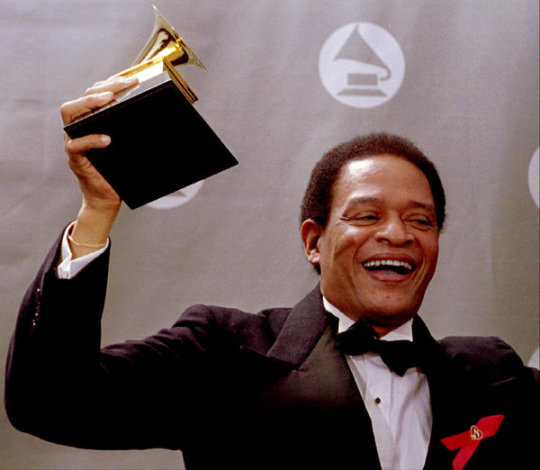
49 - Wisconsin: Al Jarreau
Born Alwin Lopez Jarreau in Milwaukee, Wisconsin in 1940, the actor and singer was the first vocalist to earn three Grammys in three different categories. Jarreau earned three of his six Grammys in pop, jazz and R&B.
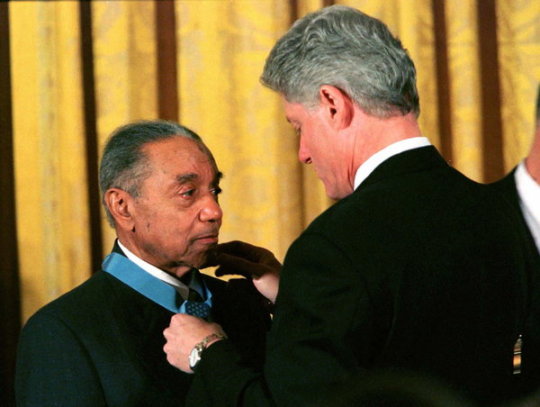
50 - Wyoming: Vernon Baker
Born in Cheyenne, Wyoming in 1919, Vernon Baker was the only living black WWII veteran to be awarded the Congressional Medal of Honor for his military service. He received the award in January 1997 from then-President Bill Clinton.
source: huffingtonpost.com
4K notes
·
View notes